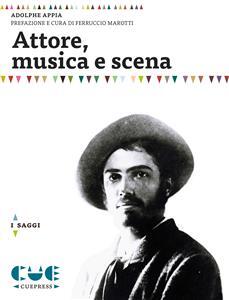
Attore, musica e scena
아직 평점이 없습니다
Dystopian
형식
킨들
페이지
257
언어
이탈리아어
출판됨
Jan 1, 2015
출판사
Cue Press
판
1
ISBN-10
8898442548
ISBN-13
9788898442546
설명
Adolphe Appia's profound insights into the interplay between music and theatrical presentation are masterfully curated in this volume. Through a selection of his pivotal writings, spanning from 1895 until later reflections, the reader is invited to explore the essence of performance art. Appia, a visionary of stage design, emphasizes the significance of harmonizing auditory and visual elements, transforming the way audiences experience theatre.
Ferruccio Marotti's contribution enriches this collection, providing context and analysis that allow readers to appreciate the historical and artistic importance of Appia’s work. Each essay in the book delves into the intricacies of staging, lighting, and the role of music, revealing how these components can elevate a narrative beyond mere storytelling.
The volume not only serves as a testament to Appia's legacy but also acts as a guide for contemporary artists and scholars who seek to understand the fundamental relationship between sound and spectacle. It offers a thoughtful exploration for anyone passionate about the performing arts.
Through his pioneering theories, Appia challenges conventional norms, prompting both practitioners and enthusiasts to rethink the nature of performance. This book stands as an essential resource for those eager to grasp the evolution of theatrical art and appreciate its cultural significance.
Ferruccio Marotti's contribution enriches this collection, providing context and analysis that allow readers to appreciate the historical and artistic importance of Appia’s work. Each essay in the book delves into the intricacies of staging, lighting, and the role of music, revealing how these components can elevate a narrative beyond mere storytelling.
The volume not only serves as a testament to Appia's legacy but also acts as a guide for contemporary artists and scholars who seek to understand the fundamental relationship between sound and spectacle. It offers a thoughtful exploration for anyone passionate about the performing arts.
Through his pioneering theories, Appia challenges conventional norms, prompting both practitioners and enthusiasts to rethink the nature of performance. This book stands as an essential resource for those eager to grasp the evolution of theatrical art and appreciate its cultural significance.